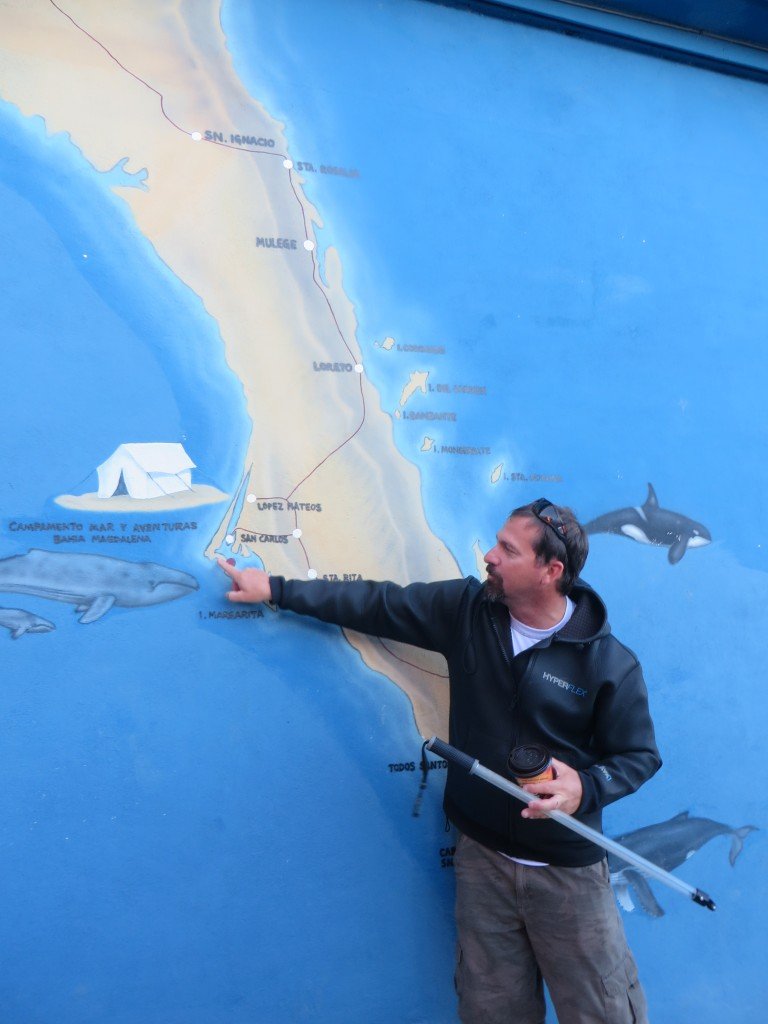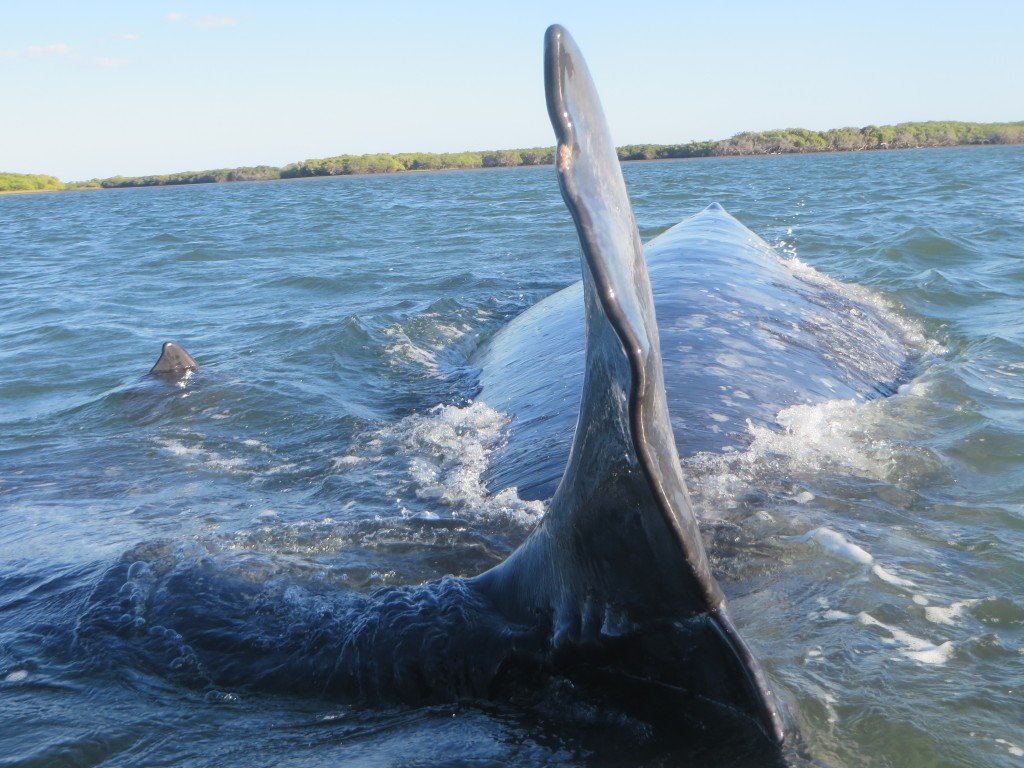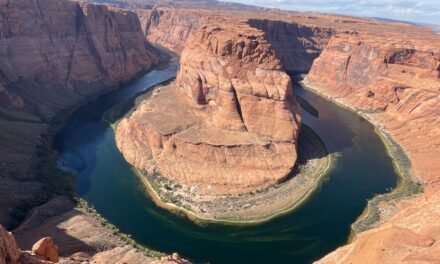
Bewitching Baja
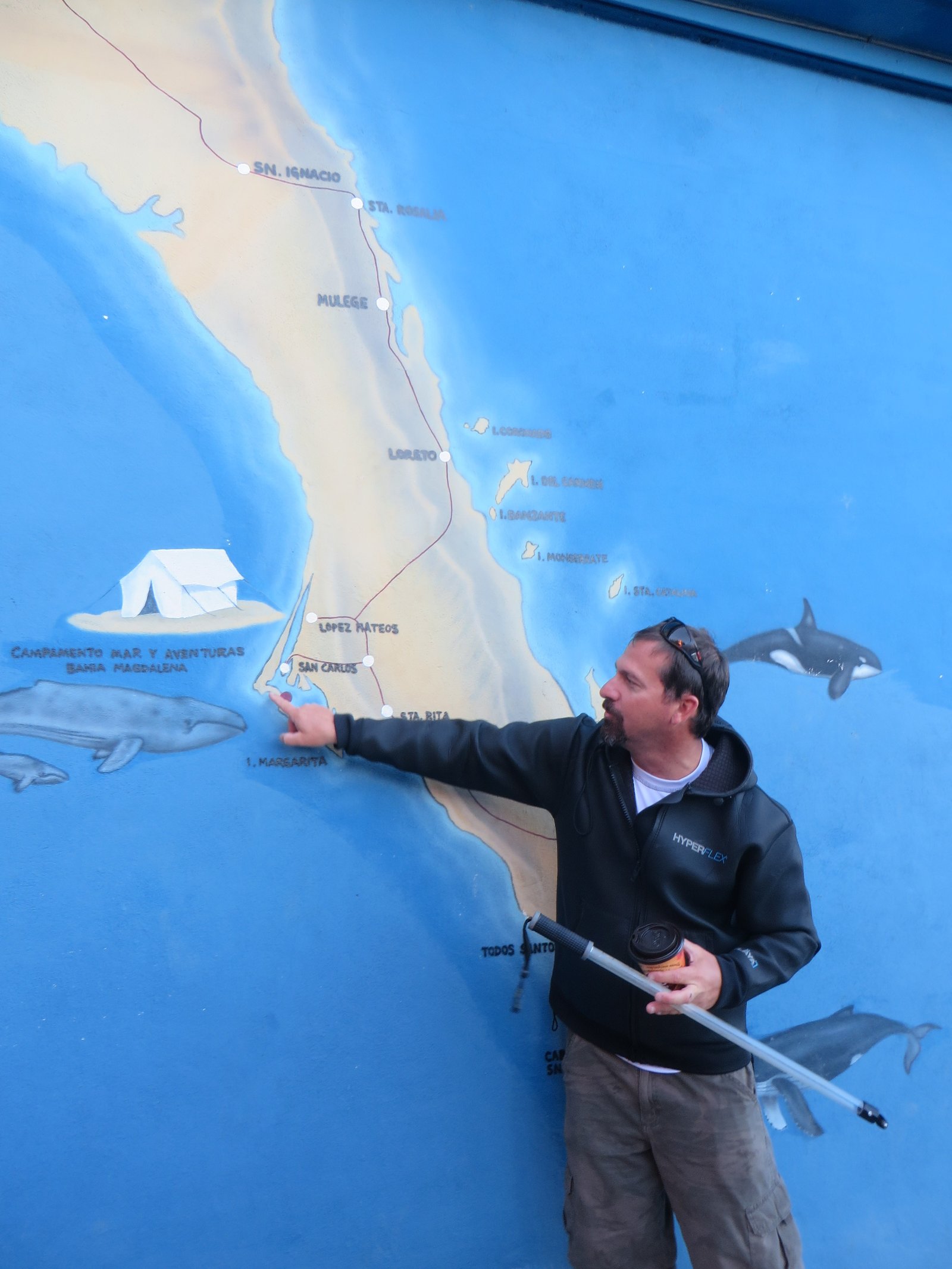
I’ve seen many Oscar-worthy productions in my life, but perhaps the most memorable was performed by a pod of gray whales at Lopez Mateos in the Sea of Cortez. Our panga, or small boat, was surrounded by these magnificent creatures as they spy-hopped, spouted, rolled over and displayed their distinctive flutes to an audience of starstruck onlookers. The dramatic show reached its climax when several of the moms proudly brought their seven-week-old calves to the side of our craft and we reached out to touch them. It was pure magic and I like to believe that both whales and humans shared in the joy of this incredibly special moment together.
While whale watching is definitely one of the highlights of a trip to Baja California, there are so many other noteworthy experiences to be had in this unique region of Mexico. Located in the northwest section of the country, Baja California is an 800-mile narrow peninsula that separates the Pacific Ocean from the Gulf of California, also known as the Sea of Cortez. Despite proximity to the U.S. and rapid growth in tourism, the vast majority of the area has remained a wild and untamed paradise with an air of isolation that sets it apart from the rest of Mexico. Graced with mesmerizing desert landscapes, lush oases and rich marine life, Baja is an enticing destination that begs to be explored in a myriad of ways.
The optimal scenario is to ply the waters in a boat, allowing you to appreciate the beauty of the sea and its vibrant life, while also offering opportunities to enjoy adventures on shore. Aboard Pacific Catalyst II’s M/V Westward, passengers spend time discovering both milieus from the comfort of a treasured wooden vessel. The company’s eleven-day Baja and the Sea of Cortez trip gives travelers the best of both worlds. And with only eight passengers and a crew of four, you are guaranteed to have an intimate experience with like-minded companions.
Designed by Northwest Naval architect, L.E. “Ted” Geary, the Westward is modeled after a salmon cannery tender and constructed around a 1923 Atlas engine. It was launched in 1924 as the flagship of the Alaska Hunting and Cruising Company and pioneered hunting, fishing and adventure travel in remote regions of Washington, Alaska and British Columbia. Over the years, the Westward served an esteemed clientele, including such well-known personalities as Bing Crosby, Walt Disney, John Wayne, E.F. Hutton, George Eastman and Marjorie Merriweather Post.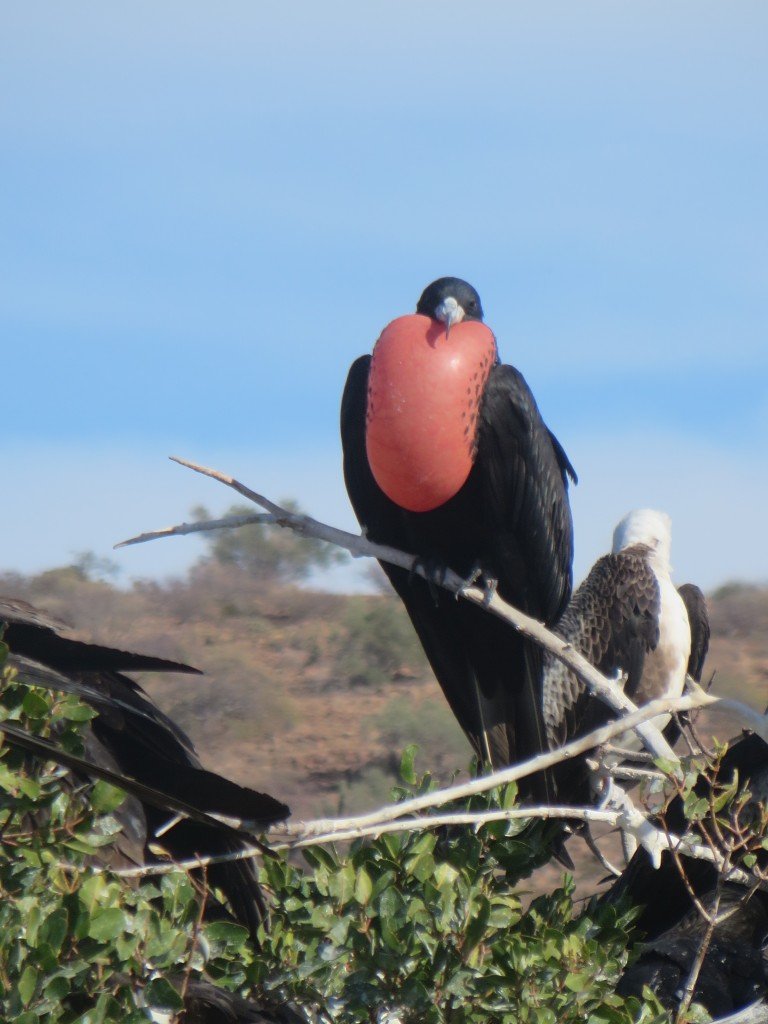
In the mid-70s, the boat was purchased by Donald and Anna Louise Gumpertz and moved to Los Angeles, where it began cruising the world, doing a 47,000-mile circumnavigation of the globe. Later, Hugh Reilly bought the Westward and returned it to the Pacific Northwest to resume her career as a charter and expedition vessel in Southeast Alaska.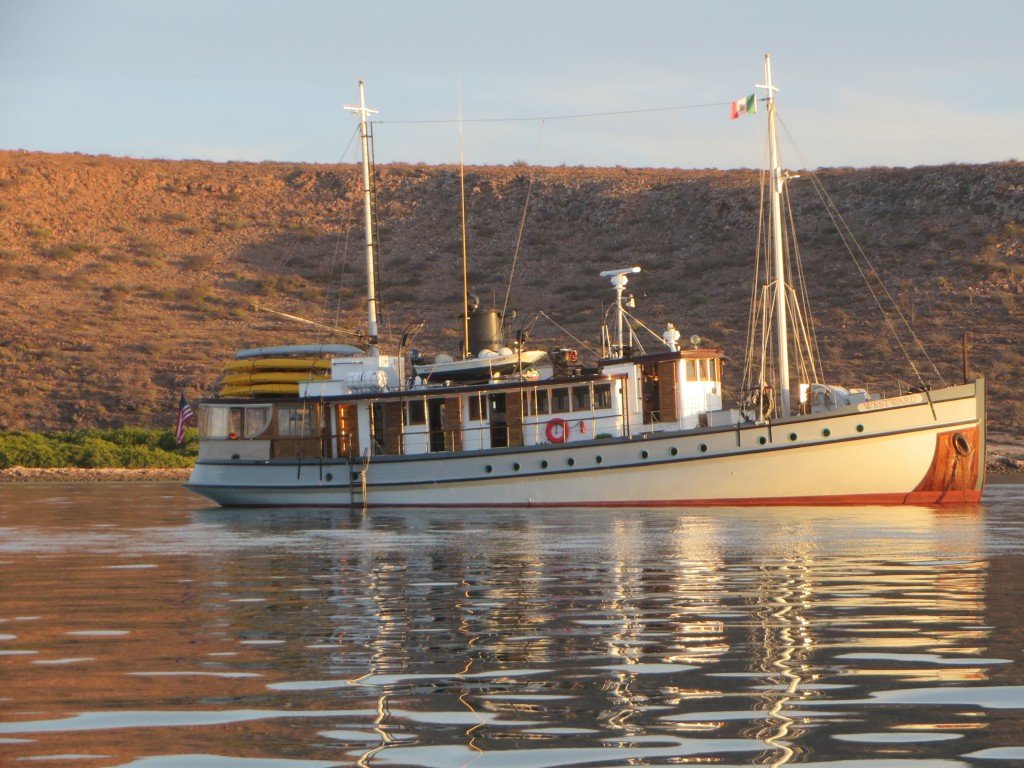
Today, the boat is owned by Bill and Shannon Bailey, who run Pacific Catalyst II, an adventure travel business that operates small ship cruises in the Pacific Northwest, Southeast Alaska and Baja. The couple also own the M/V Catalyst, another historic craft that had its beginnings as the University of Washington’s first oceanographic research vessel back in 1932. Captain Bill views himself as a “steward” of an important piece of history and believes he has a responsibility to preserve a legacy of the past. He says, “I want to keep the old boats going. Besides, I can’t think of another job I’d rather be doing. I have the best cubicle on the planet.”
The Westward is still powered by her original Atlas engine and is listed with the U.S. National Register of Historic Places for her contributions to maritime history. The vessel has recently been completely upgraded and renovated with an eye to preserving the style and décor of its bygone roots. The Westward is very comfortable, with four staterooms, each containing a double and a single bunk, settee, sink, toilet, shower and closet. Though small, the cabins are cozy and contain the basic necessities. The rest of the boat consists of a salon, dining area, kitchen, outside deck, engine room, wheelhouse and crew quarters, which are located down below.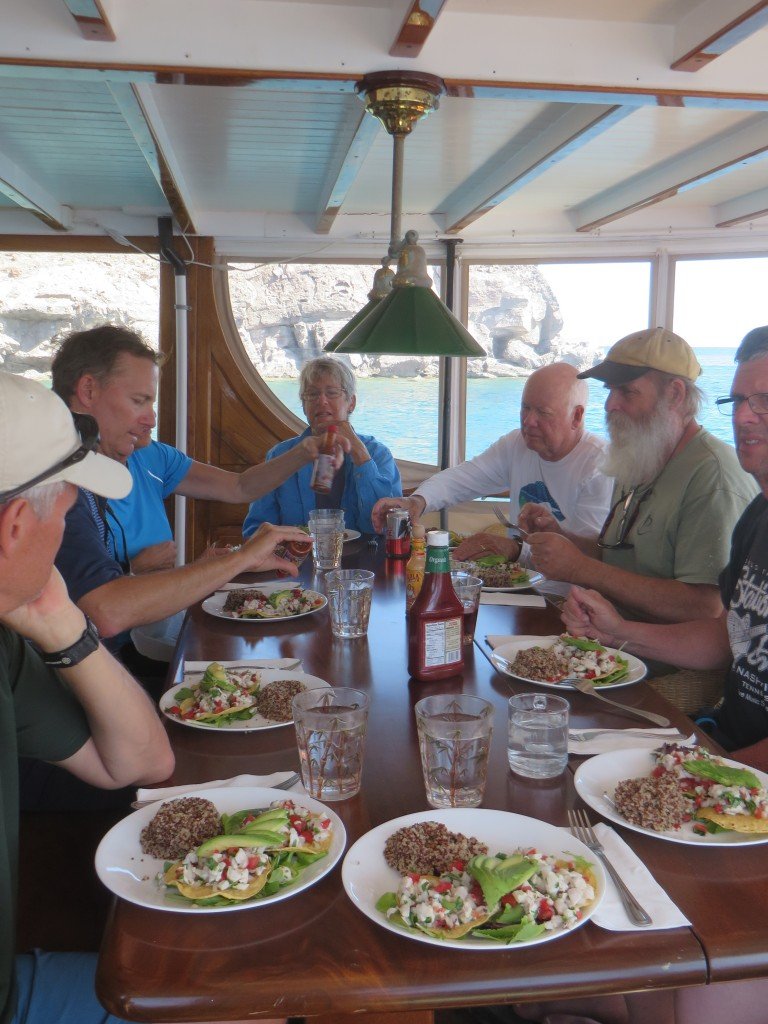
Trips either begin in La Paz and end in Loreto or go in the reverse direction, but the exact itinerary of specific stops along the way can fluctuate, depending on weather conditions, interests of the passengers, wildlife observation opportunities and other factors. The crew’s mantra regarding this aspect of flexibility is simply, “It’s the plan until it changes.” With that attitude, it’s easy to adapt to whatever situation arises. And with its small capacity, the boat can enter areas that larger crafts cannot, allowing passengers to explore hidden locales in great depth.
During the day, you’ll spend time viewing the many species of birds and sea creatures from the boat’s deck. It’s very common to see a pod of bottlenose dolphins racing alongside the vessel or soaring mobula rays jumping out of the water and putting on an astonishing aerobatic displays, only to land with a loud bang as they belly-flop back into the sea. Frigatebirds, Great Blue Herons, Heermman’s Gulls, Grebes, Petrels, Hawks and a countless number of birds grace the skies and the water. My head was spinning from looking in every direction at the magnificent array of wildlife. It’s no wonder this region is known as the “aquarium of the world” and has often been compared to the Galapagos Islands.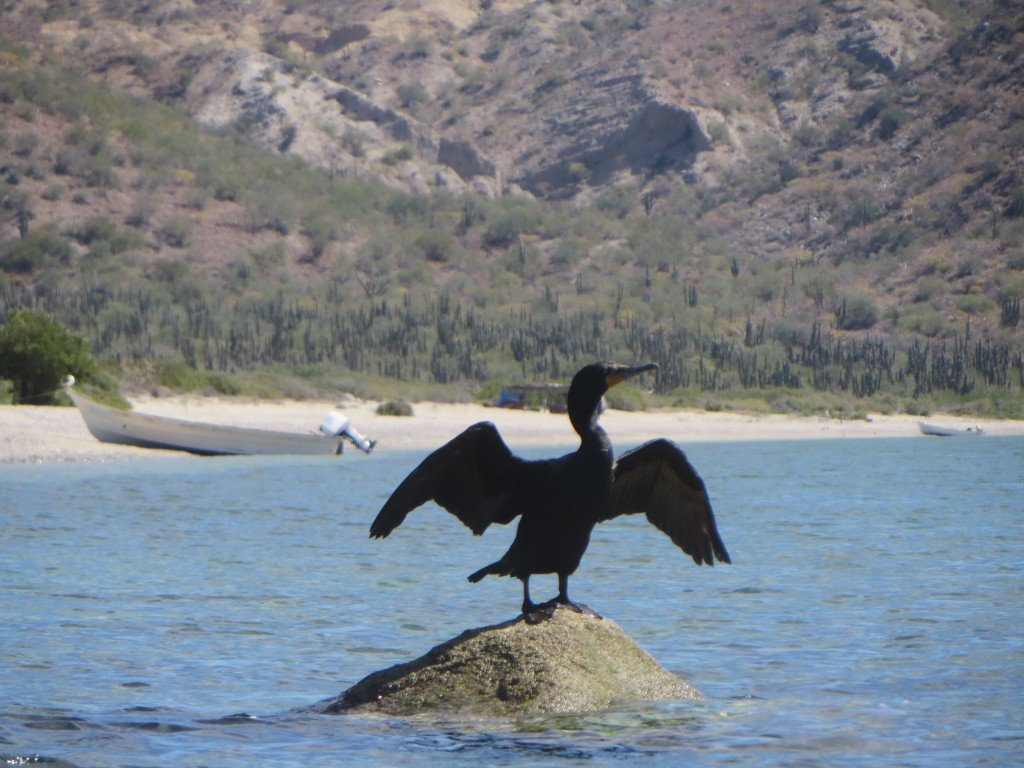
You’ll also visit pristine beaches on deserted islands, hike in the otherworldly landscape, kayak along picturesque shorelines and snorkel in the crystal clear waters amid schools of multi-colored fish. Activities are led by on-board naturalist Carlos Gajon, a personable La Paz native whose grasp of the region’s people, history and ecosystem is encyclopedic. Carlos was key to our group’s understanding of the region and its unique ecosystems, and he never ceased to amaze us with his wealth of knowledge and fascinating stories. In addition, he is an accomplished kayaker and diver, often supplying the boat with fresh fish, clams and scallops, which later found their way to our plates at mealtime, courtesy of the superb talents of Chef Tracie Triolo.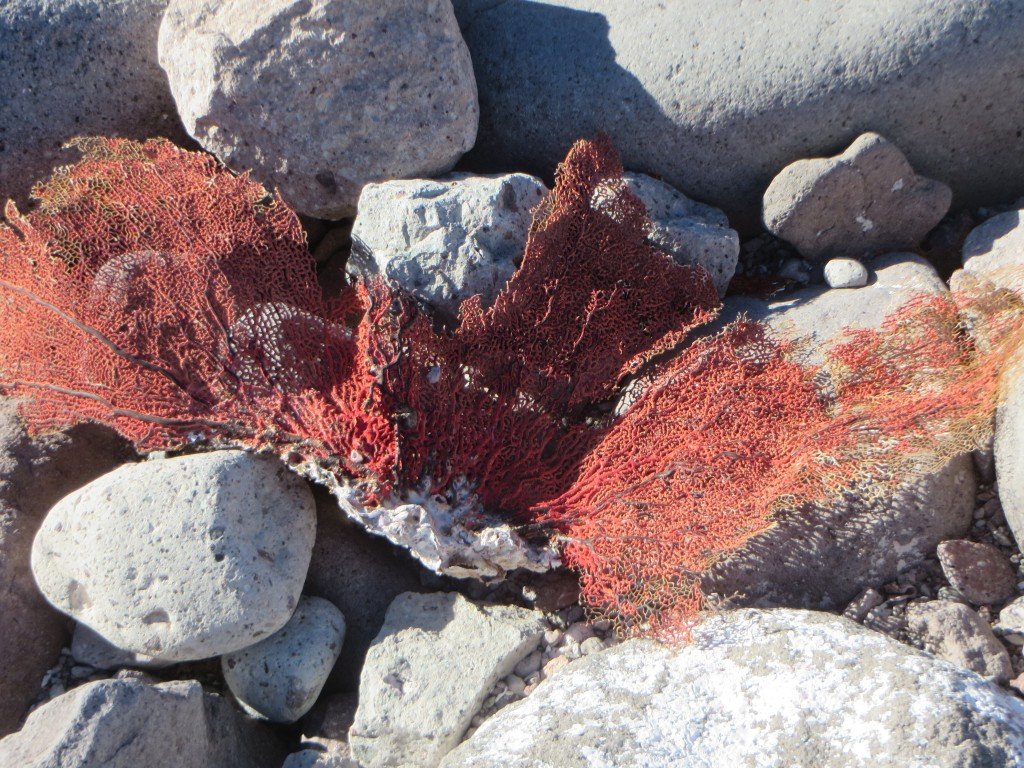
Each evening or late afternoon, the boat would anchor at a different locale, typically in a secluded and protected bay. The idea is not to travel during the night, but rather the day, allowing passengers to fully experience the journey. And, in case you’re wondering about noise at night, rest assured the boat is quiet, as it has an electrical system that allows the captain to go twelve hours at anchor without running a generator. Under the starlit skies, it’s often so quiet that you’re able to hear the humpbacks thumping or “pec slapping,” along with the panting breaths of the sea turtles.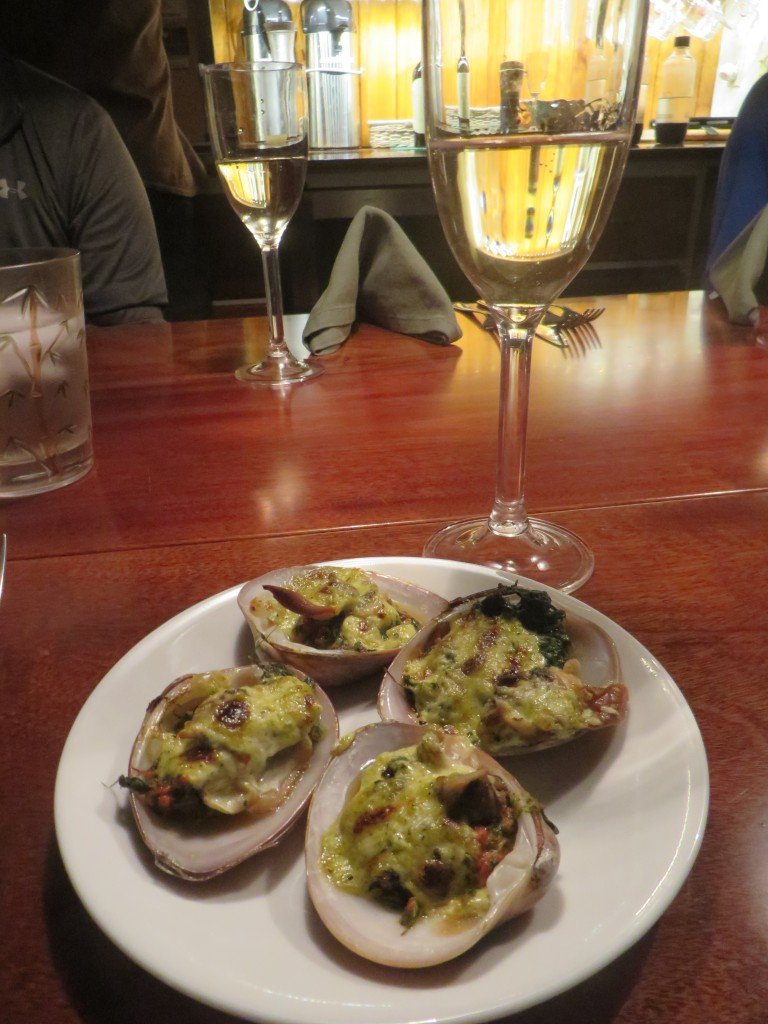
I found myself fixated on the color of the water, which ranged in hues from azure and aquamarine to emerald and turquoise, depending on time of day, vantage point and the winds. Everyone onboard had different descriptions for the sea, but we all agreed it was a constantly changing beast that could be calm and inviting one minute, then choppy and inhospitable, the next. We were fortunate during our cruise that the weather gods were in a good mood.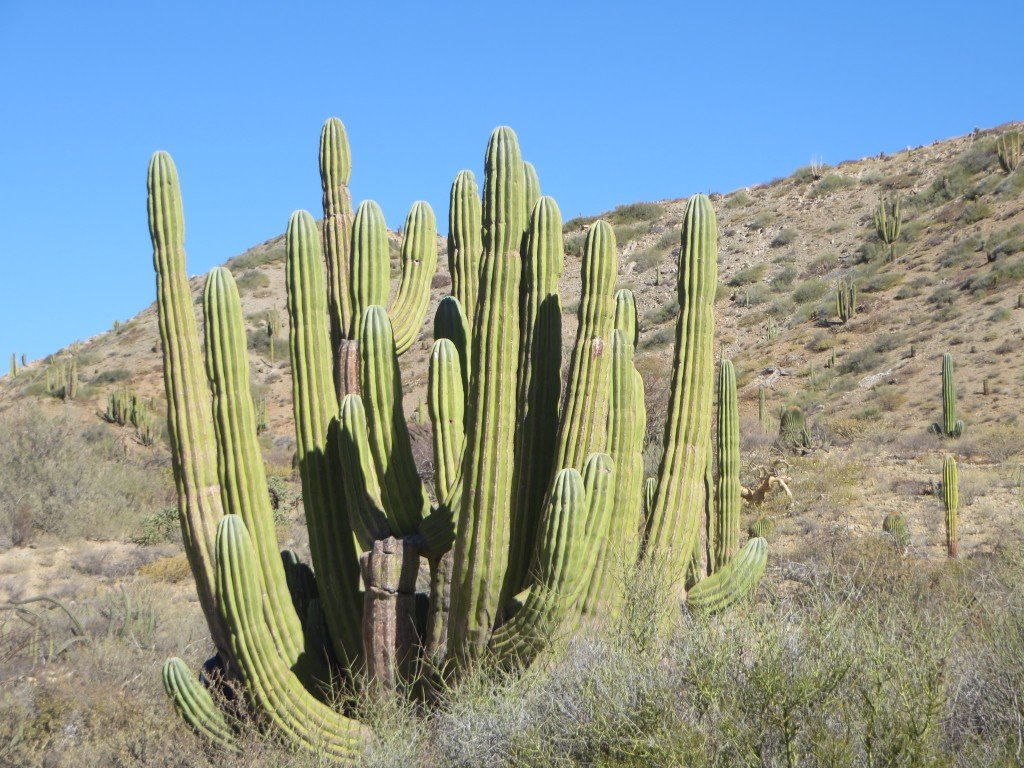
One of the most memorable activities you’ll have the chance to participate in is snorkeling with the sea lions at Los Islotes, two guano-covered rock islets, one with a large sea lion colony. More than 400 California Brown sea lions make their home here. You’ll find these sleek and intelligent creatures lolling on rocks catching the rays, barking to one another, asserting dominance in “king of the hill” fashion and frolicking in the water. If you’re lucky, the young’uns will come right up to you, wanting to play. They’ll do flips, spin around and try to get you to mimic their antics. These consummate comedians are guaranteed to make you laugh.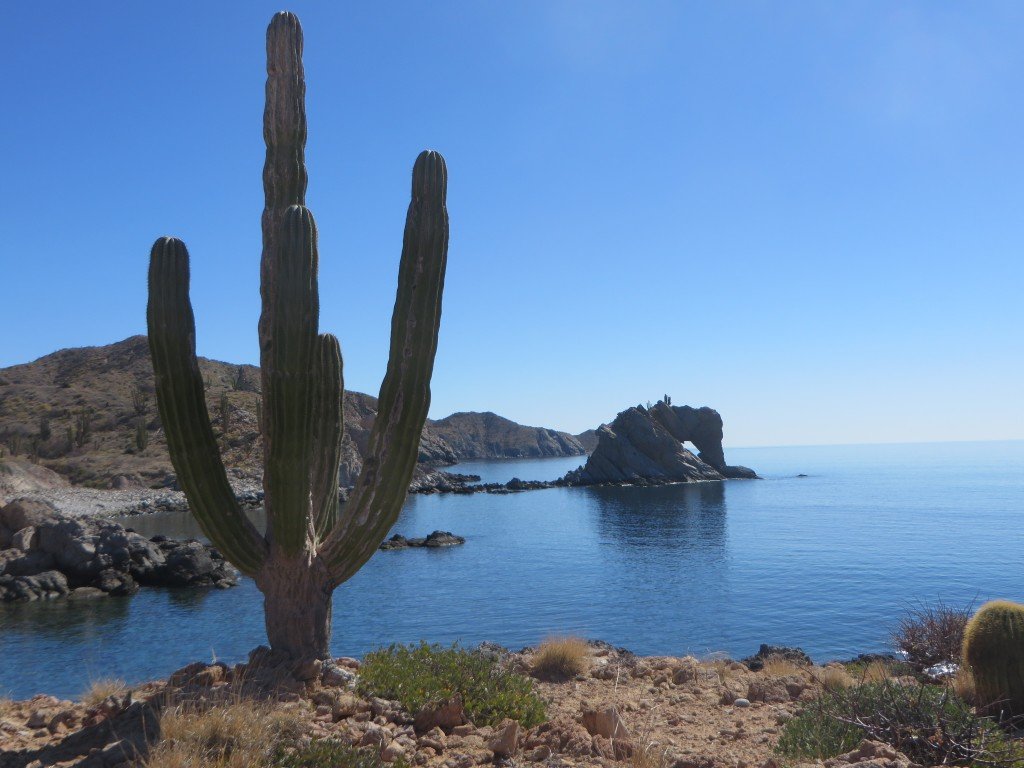
Another island of note is Isla Pardito, a tiny fishing village with only twenty residents. Located about fifty miles north of La Paz, this community has been the home of five generations. Years ago, the first inhabitants came to the island, searching for a peaceful place away from the negative influences of town, where they could make just enough money to live simply. They chose the spot because it lacked no-see-ums, the pesky, almost invisible mosquitos that can drive a person crazy, as well as the fact that it had ideal access to prime fishing waters. On our visit to Pardito, we met Sylvestre, one of the few residents remaining on the island, who greeted us and showed us how to fillet the trigger fish he caught the previous night. This mellow and tasty fish subsequently turned up on our plates at dinner that evening.
 Isla San Francisco proved to be one of the best snorkeling spots for our group, as we saw schools of colorful king angelfish, spotted grunts, gold and blue snapper, trumpeters and even a boldly striped zebra moray eel. For kayaking, San Jose Island provided a picture-perfect setting to paddle around, followed by a walk on Oyster Beach to a lighthouse and saltwater lagoon. The latter was particularly interesting as it had huge amounts of foam lapping at the edges of its body of water, as well as in the crevices of the surrounding vegetation, making the plants look like they were decorated with cotton balls. The lagoon also appeared to have a copper bottom, which we were told was due to the rust effect from the algae in the saltwater.
Isla San Francisco proved to be one of the best snorkeling spots for our group, as we saw schools of colorful king angelfish, spotted grunts, gold and blue snapper, trumpeters and even a boldly striped zebra moray eel. For kayaking, San Jose Island provided a picture-perfect setting to paddle around, followed by a walk on Oyster Beach to a lighthouse and saltwater lagoon. The latter was particularly interesting as it had huge amounts of foam lapping at the edges of its body of water, as well as in the crevices of the surrounding vegetation, making the plants look like they were decorated with cotton balls. The lagoon also appeared to have a copper bottom, which we were told was due to the rust effect from the algae in the saltwater.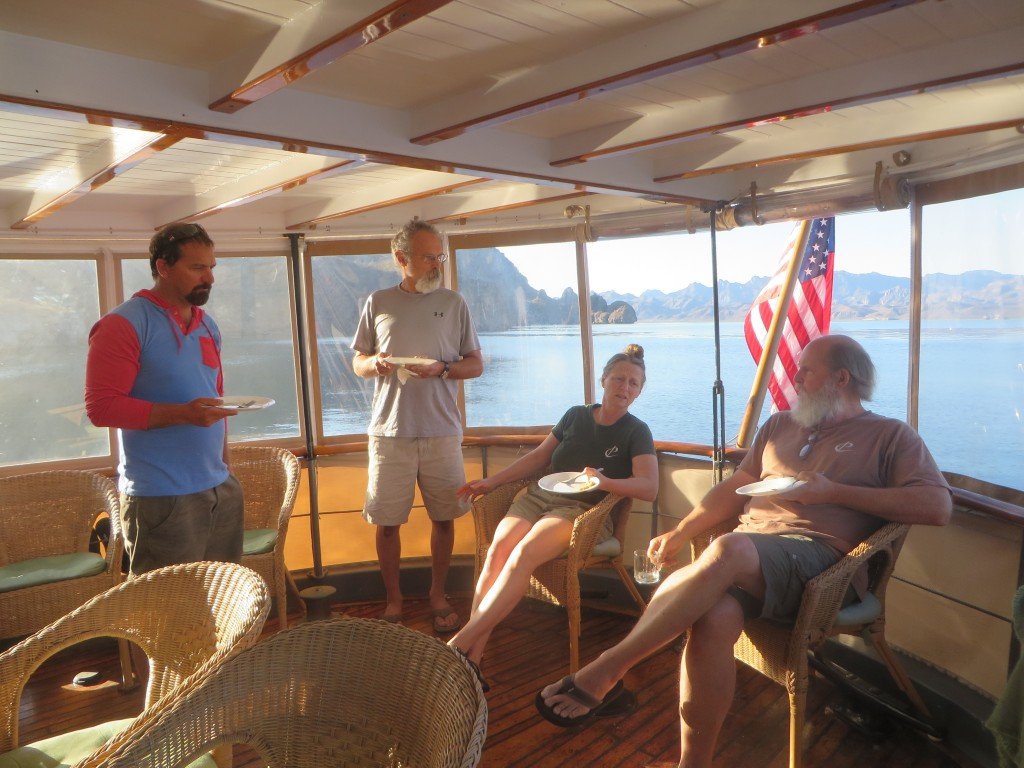
A walk through the arroyo and down into the canyon at Punta Ballena provided good examples of some of the many types of cacti that are found in Baja, such as cardon, choya, barrel, agave, organ pipe and tiny mammillaria. The variety is extensive with a multitude of shapes and sizes. Some of the cacti looked distressed due to lack of water or because animals had gotten to them. One or two were in early bloom, presenting colorful flowers to enliven the environment. It’s interesting to note that the more arms a cactus has, the older it is. We saw plenty of “senior citizens” in residence!
On our trip, we were fortunate to be able to visit Santa Catalina Island in Loreto Bay National Park. Due to its remote location and often prevailing strong winds, this island can be a challenge for boats to reach. Catalina is known as the land of the giant barrel cacti and walking among these behemoths made me feel very small and insignificant. The plants grow in larger proportions because the island has its own microclimate. They stand as grand sentries in this unique landscape, where the endemic rattle-less rattlesnake roams. Another dominant feature of the island is Elephant Rock, aptly named for its likeness to an elephant whose trunk is hanging down into the sea. On the beach was a dead sea turtle that had most likely been washed ashore many months ago. Joining it was a dead stingray with its stinger still intact. Seeing this sharp, serrated “knife” up close gave me a newfound respect for the ray’s lethal weapon. The pièce de résistance, however, was when we were heading back to the Westward and spied a hammerhead shark leisurely cruising through the water.
Exploring the islands is also akin to taking a walk back in history, as many contain prehistoric middens associated with past human occupation. On Puerto Gato, for example, you can find shards of rocks that were most likely used to sharpen tools. Other islands are known to have bones that possibly belong to the mysterious Pericú, a fierce, independent tribe that disappeared over a century ago after being exposed to European disease.
Mealtimes are a delight on the Westward, with the crew joining passengers at the table to see what delectable culinary surprises the chef has whipped up. Chef Tracie is a magician in the kitchen. She utilizes ingredients from local providers whenever possible to create wholesome, yet tasty dishes, making use of spices and herbs she grows in pots on-board the boat. Know that you will eat well and that the food is a definite highlight of the trip. One night you might have broiled clams as an appetizer, followed by turkey enchiladas with mole sauce. Another night it could be prosciutto-wrapped chicken or pork loin with sweet potato and Brussel sprout hash. Seafood reigns supreme, as fresh fish and shellfish are conveniently available. Lunches are equally as varied, from homemade pizza to lobster rolls and ceviche. Tracie even makes her own sushi! And the desserts are heavenly, especially if you’re a chocoholic.
The fourth member of the crew, Randy Good, serves as the ship’s carpenter and engineer. He was equally instrumental as the other three crew members in creating a warm and hospitable environment on the boat. On our trip, Randy was mainly occupied with putting on some finishing touches to the Westward, though he was never too busy to stop and chat or lend a hand helping with a variety of duties. And come mealtime, he was always ready with a witty remark or humorous tale to recount, often sharing the floor with the ever-entertaining Captain Bill.
During the journey, I saw the ease with which passengers and crew formed bonds and became a close knit family. There’s a wonderful sense of camaraderie that exists on this type of trip, as those who choose such an experience are generally open and friendly individuals, curious about their surroundings, while possessing a deep and abiding respect for nature. And because there are no televisions or computers or cell phone service that works while you’re cruising the Sea of Cortez, you will be totally unplugged, leaving more time to cultivate friendships and become connected to this remarkable and idyllic region.
For more information, contact AdventureSmith Explorations, the world’s leading online resource for small ship cruises, adventure cruises and adventure travel: www.adventuresmithexplorations.com










